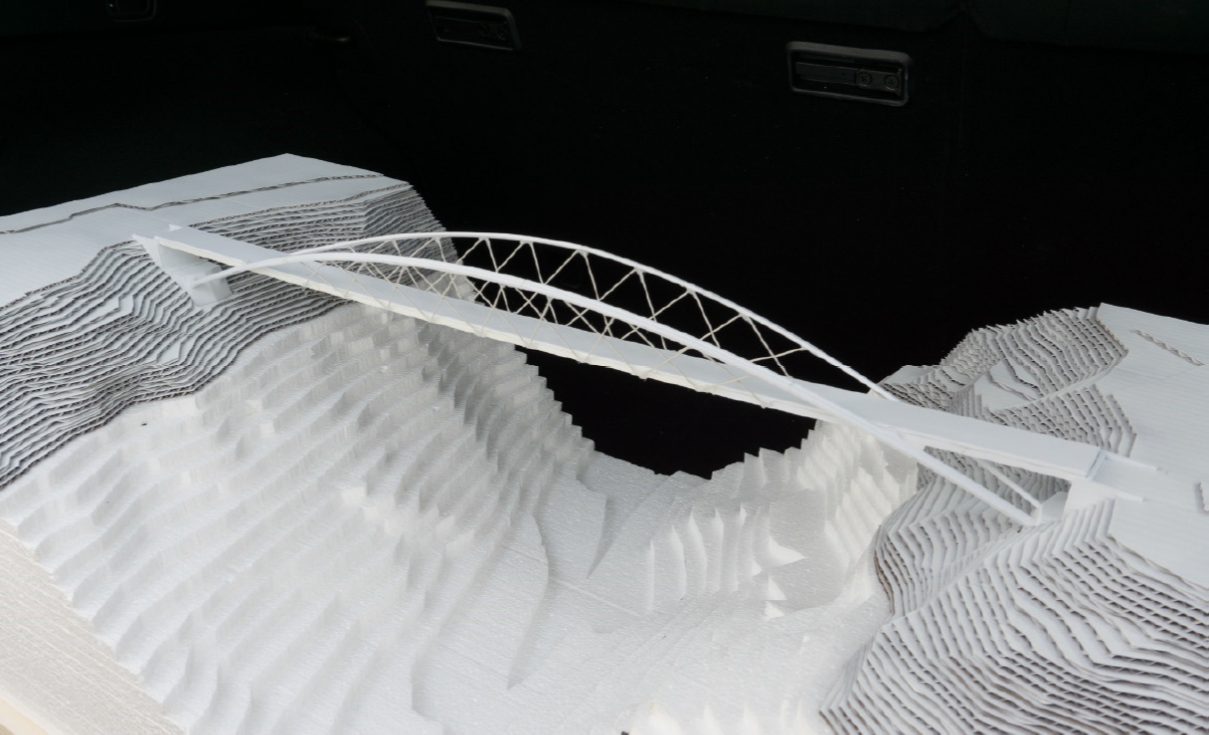Structural design of the pedestrian bridge at Chateau Böttstein
(original title: Tragwerksentwurf der Fuss- und Radwegbrücke bei Schloss Böttstein)
Author: Pascal Pulver
Language: German
Abstract
The Civil Engineering Department of the canton of Aargau intends to construct a new pedestrian and cyclist bridge across the river Bruggbach in the municipality of Böttstein. The current foot and cycle path along the main road can be improved by a new route passing the Chateau of Böttstein and crossing the river over the new bridge. The aim of this thesis is to propose a suitable preliminary design for this bridge. The optimal routing of the foot and cycle path crosses the Chateau parking lot, leads to the new bridge, which crosses the river Bruggbach at a height of 25 m, and connects to the current network on the north side of the valley. Four main bridge types are compared in the variant study. The arch bridge type obtains the best rating due to the terrain’s and geology’s suitability to bear high compressive forces. A steel arch bridge with a usable width of 3.0 m and a length of 70 m is therefore designed. The proposed preliminary design is defined by two inclined arches arranged along the sides of the bridge deck that are founded in a common foundation on either side of the valley. Due to its lack of a horizontal stabilisation, the arch requires a high bending stiffness against out-of-plane buckling. Therefore, a welded cross-section with a width of 600 mm and a height of 300 mm is chosen. The hangers consist of high-strength steel wire ropes. The main span of the bridge is connected via consoles to the hangers and is divided into eleven single spans. The compact design of the bridge deck consists of quadratic and rectangular hot rolled profiles which serve as longitudinal and cross beams. A parametric 3D model of the bridge is created with the CAD software Rhino and Grasshopper. The static system is defined based on the axis geometry from the 3D model. The Finite-Element-Method software SOFiSTiK is used for the static and dynamic calculations and the verification of the ultimate and serviceability limit states. The calculations show that the chosen system and cross-sections fulfil the requirements. The critical elements of the bridge are the connections between arch and deck as well as the connection between arch and foundation. The first connection is welded together by eight planar, triangular shaped steel plates. The connection to the foundation is made via an encased steel element that connects the two arches. The design has a total weight of 65.5 t which is equivalent to 1 tonne per meter of bridge. The arch and the deck are pre-fabricated as 12 m long pieces in the steel factory and then delivered to the construction site. There, the arches are assembled and are lifted into position with a mobile crane. The deck can be lifted in by mobile crane as well. The high degree of pre-fabrication allows for a short and efficient construction. The costs of construction are estimated at CHF 1.1 million (excl. VAT) which is equivalent to CHF 5’400 per square meter of deck area. The total project costs, including planning costs and costs for land acquisitions, are estimated at a total of CHF 1.6 million. The result of this thesis is an efficient, economic and aesthetically appealing bridge structure that meets all design requirements and is therefore a suitable preliminary design for the bridge project in Böttstein.

